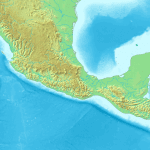
Disability Pride Month
What Does it Mean to Me?
Did you know Disability Pride Month occurs every July? Isn’t it awesome that America is a country that encourages its citizens to take pride in everything that makes us unique?
As an individual with cerebral palsy and osteoarthritis, I understand the challenges of living with a disability. I also know what it means to be excluded, feel unloved, get overlooked, and experience rejection.
These forms of rejection made me feel ashamed to have a disability because I did not understand my value. I spent twenty-seven years asking God why and wondering if I was cursed with these physical limitations.
Thankfully, one day during daily quiet time, God used John 9:2-3 to change my perspective. This happened as Jesus says the man was born blind, so God’s power could be seen through him.
Since reading that verse six years ago, I’ve surrendered to and appreciate having a disability. This is because no matter how these physical conditions cause me to suffer, I know God will be glorified.
Hopefully, God is glorified through this article as I highlight the history, purpose, and flag associated with Disability Pride Month. I’ll also examine disabilities from a biblical perspective and the lesson within Mephibosheth’s invitation to sit at King David’s Table.
History and Purpose
How and Why Does Disability Pride Month Exist
Disability Pride Month is an annual occasion acknowledging the accomplishments, challenges, experiences, and testimonies of people with disabilities. This month also embraces disability culture and advocates for the inclusion of disabled citizens.
It became official after the passage of the Americans with Disabilities Act (ADA) on July 26, 1990. Signed by President George H. Bush, the ADA Act protects disabled citizens from discrimination.
This law is crucial as 25% of adults in the United States (70 million people) are diagnosed with at least one disability.
Another reason why this law and occasion are crucial is the challenges those with special needs still face.
While many challenges are specific to an individual’s capabilities, five common barriers hinder those with ADA needs. These barriers are
- Communication.
- Physical.
- Public perception.
- Social limitations.
- Unenforced federal laws.
These barriers hinder the disabled’s ability to provide for themselves and enjoy the quality of life everyone desires.
The Disability Pride Month Flag
Who is Ann Magill?
One individual who understands the hassles that come with having a disability is Ann Magill. Ann Magill was raised in New York’s Hudson Valley and lives in Virginia.
She is a middle-aged woman with cerebral palsy who uses her writing skills to advocate for the disabled, social justice issues, and politics. She also writes essays, poetry, and short stories.
Along with these passions, Magill is also the creator of the Disability Pride Month Flag. The inspiration behind this creation comes from two unfortunate incidents.
The first was Magill’s irritation with the lack of enthusiasm and effort put into organizing an event meant to commemorate the ADA’s 20th anniversary. The irritation sparked her desire for Disability Pride Month to have a flag that would serve as a visible symbol.
Sadly, transitioning from a longing to see a flag to being the one to make it a reality came after learning about an overlooked tragedy.
While watching the early morning news, Magill heard about a massacre in Japan. The suspect murdered twenty-six special needs residents in a living facility, considering the disabled worthless unless they are youthful.
What Does the Flag Represent?
This tragedy and its short-lived news coverage motivated Magill to create the flag in 2016. The flag was finally created in 2019 with a zig-zag design representing how people with disabilities maneuver through challenges.
While cool in appearance and reasoning, the original design was harmful. The image unintentionally worsened symptoms for those with visually triggered conditions when viewing it on the computer.
Magill learned from the mistake by using the feedback she received to design a visually tolerant flag for all viewers. The design features a charcoal gray background with five parallel stripes: red, gold, white, light blue, and green. Here’s what the stripes represent
- Charcoal black-rage/mourning those who’ve died.
- Red- physical disabilities.
- Gold-neurodiversity.
- White-non-visible/undiagnosed disabilities.
- Light Blue-emotional and psychiatric disabilities.
- Green-sensory disabilities.
Ways to Celebrate
Now that you know what the flag means, you can join the celebration by proudly waving it. You can also celebrate Disability Pride Month by learning about ableism. Ableism systemically dehumanizes disabled individuals by suggesting they need fixing.
Within this, you can learn to identify people as individuals and not their medical condition. The means instead of calling us handicapped or disabled, say an individual with a disability.
Along with modifying your language so as not to offend this population, you can also celebrate by
- Attending events in your area, city, or state.
- Become an advocate of inclusiveness, fight on their behalf.
- Connect and build relationships with individuals who live with disability.
- Donate to organizations dedicated to supporting
- Promote this cause on social media by using tags like #thebarriersweface
- Share your story or encourage others to talk about their journey.
Disabilities from a Biblical Perspective
Does Scripture Oppose Disability Pride Month?
While we live in a country that encourages people with disabilities to share their story, this was not the case in biblical times. Back then, people diagnosed with diseases like leprosy were considered unclean and isolated from their community.
Many considered lame were left lying on mats, begging citizens for money (unless Jesus or his disciples healed them). Additionally, Leviticus 21:16-21 teaches that anyone with a physical defect was not allowed into the Lord’s assembly.
On the surface, these examples seem to suggest that the Bible rejects those with disabilities. However, this is untrue since the Bible instructs readers not to curse the mute or blind and care for the needy.
The Bible also uses John 9:2-3 to show that God allows people to have physical, mental, and emotional imperfections so that his power can be revealed through them. 2 Corinthians 12:9 supports this as Paul mentions how God’s strength is made perfect in our weaknesses.
Furthermore, John Piper believes that the Israelites did not take offense to Leviticus 21:16-21. This command was addressed to priests who were entering the presence of the Holy God of Israel. The priest understood no kind of imperfection could exist in Eliohim’s presence.
Additionally, those who were isolated due to medical conditions were separated from the general population to keep disease from contaminating God’s holy people.
A Lesson from Mephibosheth’s Invitation
Similar to those infected with leprosy, Mephibosheth knows what it’s like to have a life-changing condition. When he was five, his nurse dropped him while fleeing to safety, causing him to be lame in both feet.
Though a victim of unfortunate circumstances, Mephibosheth became the beneficiary of King David’s covenant promise to Jonathan. David promised to always be kind to Jonathan’s family.
When David inquired about whether there was a member of Saul’s family alive, he could extend kindness to, he learned about Mephibosheth. As Saul’s grandson and Jonathan’s son, David chooses to bless Mephibosheth.
King David blesses Mephibosheth by
- Restoring Saul’s land to him.
- Inviting him to always dine at the king’s table.
- Assigning 25 men to take care of him and his land as long as he lives.
Mephibosheth recognized that taking a seat at the king’s table was a gracious act due to the difference in their social status (Pulpit Commentary). Commentators also believe Mephibosheth’s infirmities made him feel unworthy of such kindness.
David’s kindness toward Mephibosheth teaches believers that they should be compassionate to those with disabilities.
Your kindness may not be as grand as David’s gesture, and that’s okay. All that matters is the effort you make to help those with disabilities live a better life. For you are blessed when being kind to those in need (Proverbs 14:21)!
How will you show compassion during Disability Pride Month? Leave a comment and let me know. Your feedback is greatly appreciated!












